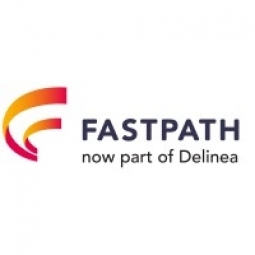Download PDF
Time Saving SoD for Dynamics AX
Technology Category
- Functional Applications - Enterprise Resource Planning Systems (ERP)
Applicable Industries
- Electronics
Applicable Functions
- Business Operation
Use Cases
- Regulatory Compliance Monitoring
- Remote Asset Management
Services
- System Integration
- Software Design & Engineering Services
The Challenge
Hamamatsu, a company that researches light and develops new products, was facing a challenge with their segregation of duties (SoD) management in their ERP system, Microsoft Dynamics AX. The system did not provide an easy way to manage roles, users, privileges, and duties, which resulted in the IT Business Analyst, Amy Padovani, having to handle all SoD management manually. This manual process of analyzing segregation of duties and locating where there are conflicts took weeks to execute. Hamamatsu needed an automated way to report and correct critical access areas.
About The Customer
Hamamatsu Photonics K.K. is a company that was established in 1953 by Heihachiro Horiuchi, a student of Dr. Kenjiro Takayanagi, who is known as the “father of Japanese television.” The company has inherited the “photoelectric technology” developed by Dr. Takayanagi for converting light into electrical signals as well as “the spirit of pursuing unknown and unexplored realms” which led him to the achievement of displaying a Japanese character on a cathode-ray tube for the first time in the world. Over the past 65 years, Hamamatsu has been consistently engaged in developing photoelectric devices and their application products while moving forward along with the continuing advances in technologies of light.
The Solution
Hamamatsu found a solution in Fastpath Assure, a comprehensive, interactive tool that enables organizations to identify security conflicts within their ERP application, better understand their overall security, and provide the necessary documentation to both internal and external audit teams. Fastpath Assure eliminates manual processes, increases accuracy, and saves time. The implementation of Fastpath Assure was fast and easy, taking only about four hours. The support from Fastpath was also exceptional, guiding Hamamatsu through every step of the process.
Operational Impact
Quantitative Benefit
Related Case Studies.

Case Study
Remote Temperature Monitoring of Perishable Goods Saves Money
RMONI was facing temperature monitoring challenges in a cold chain business. A cold chain must be established and maintained to ensure goods have been properly refrigerated during every step of the process, making temperature monitoring a critical business function. Manual registration practice can be very costly, labor intensive and prone to mistakes.

Case Study
Cloud Solution for Energy Management Platform-Schneider Electric
Schneider Electric required a cloud solution for its energy management platform to manage high computational operations, which were essential for catering to client requirements. As the business involves storage and analysis of huge amounts of data, the company also needed a convenient and scalable storage solution to facilitate operations efficiently.

Case Study
Leveraging the IoT to Gain a Competitive Edge in International Competition
Many large manufacturers in and outside Japan are competing for larger market share in the same space, expecting a growing demand for projectors in the areas of entertainment, which requires glamor and strong visual performance as well as digital signage that can attract people’s attention. “It is becoming more and more difficult to differentiate ourselves with stand-alone hardware products,” says Kazuyuki Kitagawa, Director of Service & Support at Panasonic AVC Networks. “In order for Panasonic to grow market share and overall business, it is essential for us to develop solutions that deliver significant added value.” Panasonic believes projection failure and quality deterioration should never happen. This is what and has driven them to make their projectors IoT-enabled. More specifically, Panasonic has developed a system that collects data from projectors, visualizes detailed operational statuses, and predicts issues and address them before failure occurs. Their projectors are embedded with a variety of sensors that measure power supply, voltage, video input/ output signals, intake/exhaust air temperatures, cooling fan operations, and light bulb operating time. These sensors have been used to make the projector more intelligent, automatically suspending operation when the temperature rises excessively, and automatically switching light bulbs. Although this was a great first step, Panasonic projectors were still not equipped with any capability to send the data over a network.








